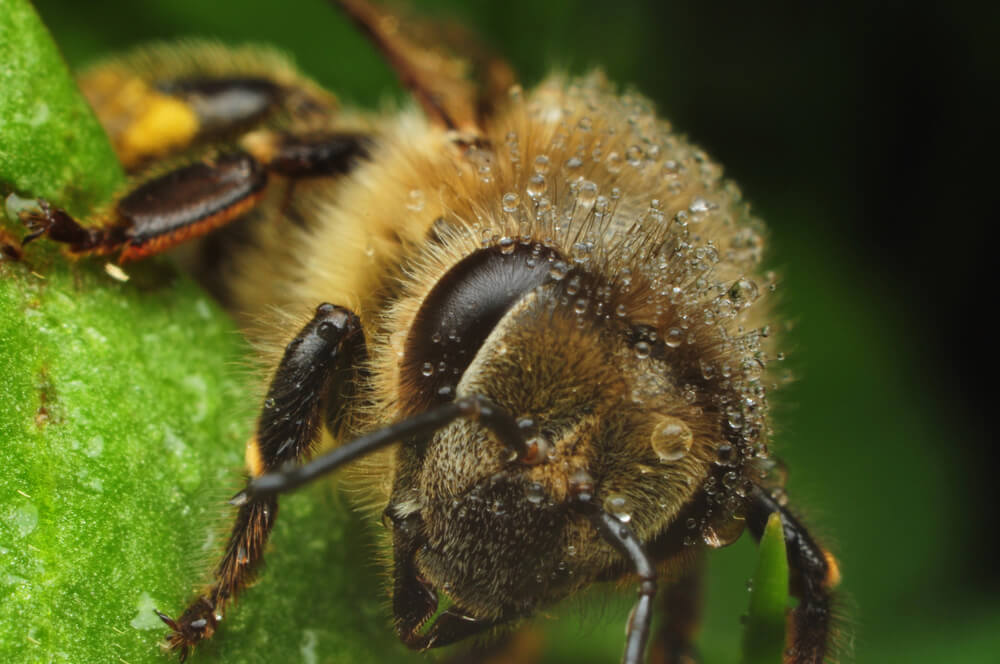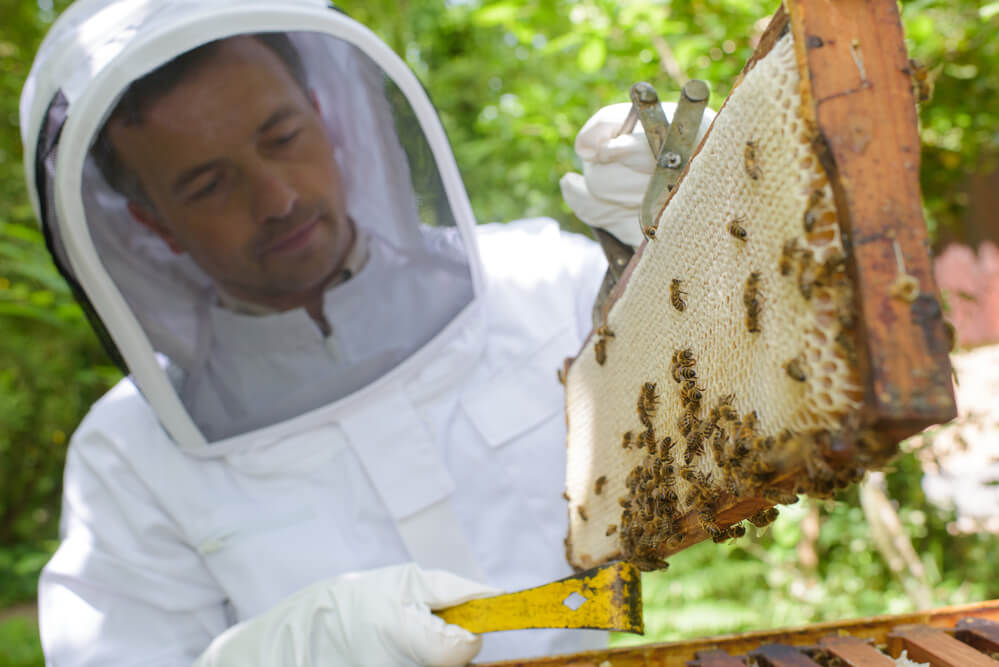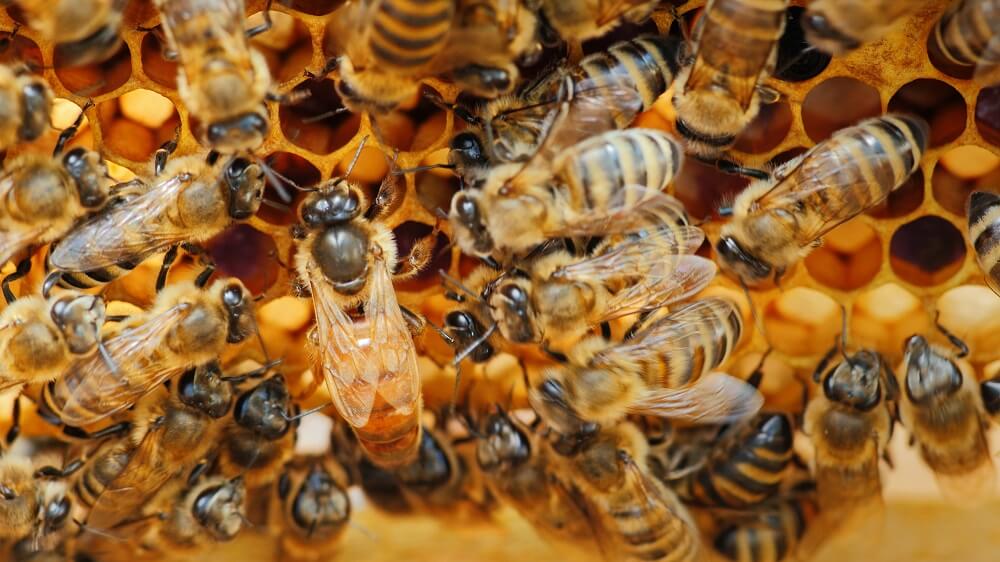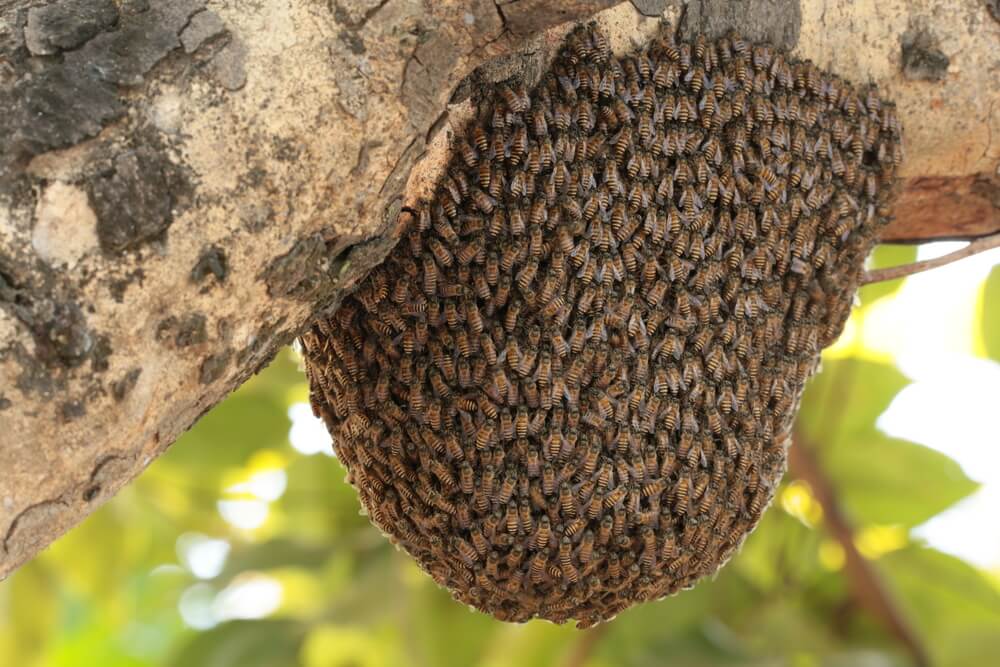Table of Contents:
What Are Buckfast Bees?
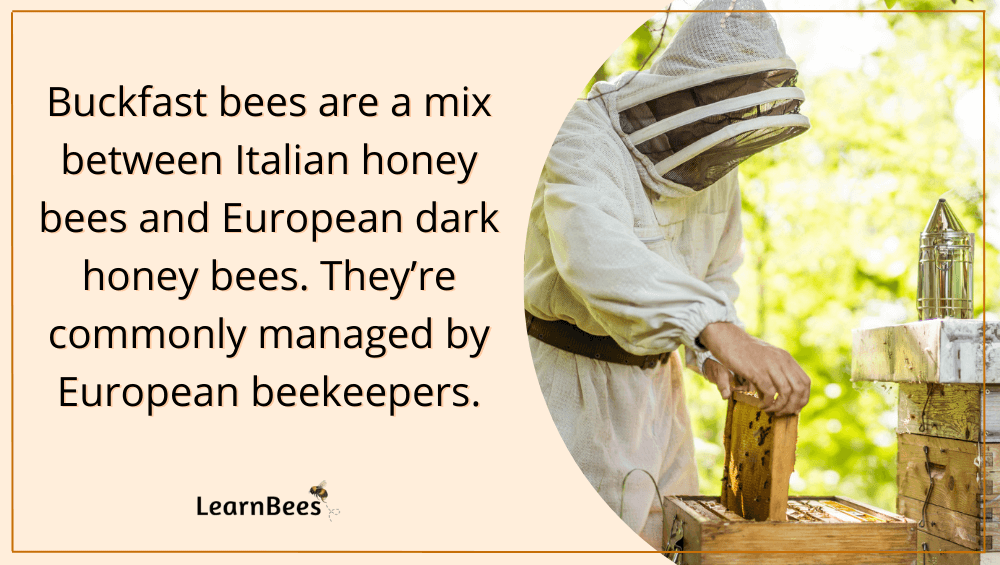
Buckfast bees are a bee breed that combines Italian honey bees with European dark honey bees.(1, 2)
Buckfast bees were created by Karl Kehrle, a beekeeper and monk who lived in Buckfast, England. His goal was to breed two different races of honey bees and combine the best characteristics of both.(3, 4)
Karl Kehrle (known as “Brother Adam”) reported Buckfast bees as hardworking, more disease-resistant bees that were less likely to swarm. As for temperament, Brother Adam found Buckfast bees to be docile and better at handling non-ideal weather conditions.
Buckfast bees are primarily found in Germany, Ireland, France, and the United Kingdom.
With that in mind, there are only a handful of Buckfast bee suppliers in the United States. Their limited availability can make them more expensive than other bee breeds.
How Do Buckfast Bees Compare to Other Breeds?
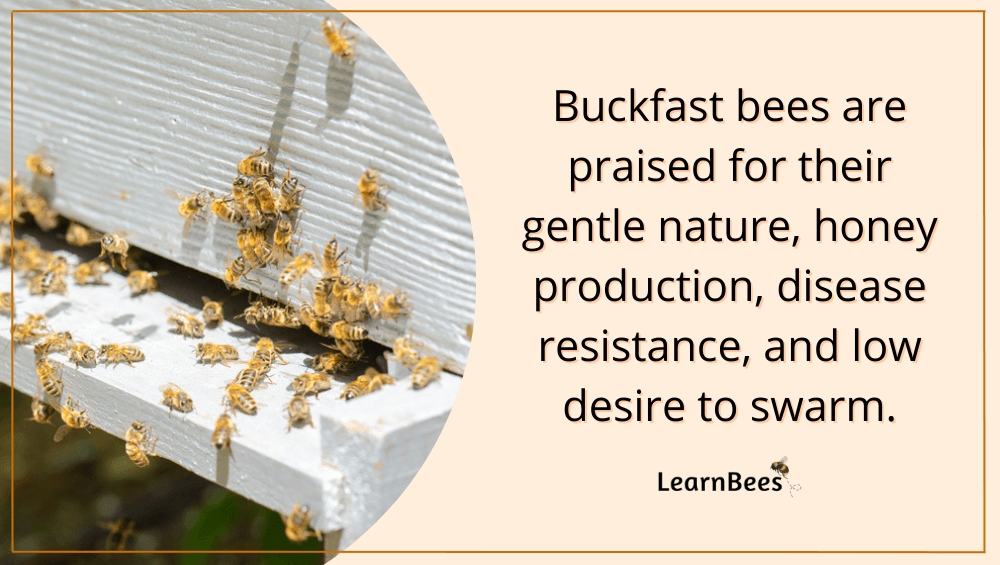
Buckfast bees are praised for their gentle nature, honey production, disease resistance, and low desire to swarm. However, this doesn’t mean Buckfast bees are right for you or your climate.
Keep in mind:
Honey bee breed descriptions only give you a general idea of what to expect from that type of bee. There can still be significant variances among bees within a breed, just like with cats, dogs, chickens, etc.
Additionally, your local ecosystem greatly influences how the colony behaves. You can have the “best” bee breed in the world but still face trouble if the weather conditions aren’t good or if the bees are exposed to pesticides, for example.
So, at the end of the day?
We recommend having a diverse apiary that allows you to test different honey bees side by side. Most bees will thrive if the conditions are good.
With that said, let’s compare some general characteristics of Buckfast bees with other honey bee breeds:
- Italian vs. Buckfast Honey Bees
- Carniolan vs. Buckfast Honey Bees
- Caucasian vs. Buckfast Honey Bees
- German vs. Buckfast Honey Bees
- Russian vs. Buckfast Honey Bees
- Saskatraz vs. Buckfast Honey Bees
Italian vs. Buckfast Honey Bees
| Italian Bees | Buckfast Bees | |
|---|---|---|
| Honey Production | Very Good | Good |
| Temperament | Gentle | Gentle |
| Disease Resistance | Moderate | Strong |
| Swarming Likelihood | Moderate | Low |
| Winterizing | Moderate | Good |
| Availability | High | Limited |
| Robbing Likelihood | High | Low |
| Population build-up | Strong | Moderate |
Carniolan vs. Buckfast Honey Bees
| Carniolan Bees | Buckfast Bees | |
|---|---|---|
| Honey Production | Good | Good |
| Temperament | Very Gentle | Gentle |
| Disease Resistance | Good | Strong |
| Swarming Likelihood | High | Low |
| Winterizing | Good | Good |
| Availability | Moderate | Limited |
| Robbing Likelihood | Moderate | Low |
| Population build-up | Strong | Moderate |
Caucasian vs. Buckfast Honey Bees
| Caucasian Bees | Buckfast Bees | |
|---|---|---|
| Honey Production | Moderate | Good |
| Temperament | Very Gentle | Gentle |
| Disease Resistance | Moderate | Strong |
| Swarming Likelihood | Low | Low |
| Winterizing | Good | Good |
| Availability | Limited | Limited |
| Robbing Likelihood | High | Low |
| Population build-up | Slow | Moderate |
German vs. Buckfast Honey Bees
| German Bees | Buckfast Bees | |
|---|---|---|
| Honey Production | Low | Good |
| Temperament | Defensive | Gentle |
| Disease Resistance | Low | Strong |
| Swarming Likelihood | Moderate | Low |
| Winterizing | Very Good | Good |
| Availability | Limited | Limited |
| Robbing Likelihood | Moderate | Low |
| Population build-up | Slow | Moderate |
Russian vs. Buckfast Honey Bees
| Russian Bees | Buckfast Bees | |
|---|---|---|
| Honey Production | Low | Good |
| Temperament | Defensive | Gentle |
| Disease Resistance | Strong | Strong |
| Swarming Likelihood | High | Low |
| Winterizing | Very Good | Good |
| Availability | Moderate | Limited |
| Robbing Likelihood | Low | Low |
| Population build-up | Moderate | Moderate |
Saskatraz vs. Buckfast Honey Bees
| Saskatraz Bees | Buckfast Bees | |
|---|---|---|
| Honey Production | Good | Good |
| Temperament | Gentle | Gentle |
| Disease Resistance | Moderate | Strong |
| Swarming Likelihood | Low | Low |
| Winterizing | Very Good | Good |
| Availability | Moderate | Limited |
| Robbing Likelihood | Low | Low |
| Population build-up | Moderate | Moderate |
Should I Buy Buckfast Bees?

Truthfully, we don’t advocate for one breed of honey bee over another. Instead, we recommend having a diverse bee yard that allows you to find the right breed for your local ecosystem.
One thing we do suggest, however, is to buy your bees locally. Don’t buy bees online.
Why?
Because local bees, no matter the breed, will be better acclimated to your local conditions. Also, the seller will be easier to reach if you have issues with your colony.
Buying bees from the other side of the country can be disastrous, as they have no experience with your local weather and forage.
Remember, many factors affect your honey bees, including:
- Climate
- Latitude
- Humidity
- Available forage
- Differences in predators
- Differences in parasites
- Differences in local pesticide use by neighbors
- Water availability
- Air pollution
- Noise levels
With that said, if you have a local breeder that sells Buckfast bees, then go for it. Otherwise, get to know your local breeders and see what they recommend.
As you gain experience, you’ll learn about your colony and how to handle them.
FAQs About Buckfast Bees
- Are Buckfast bees gentle?
- How do I identify a Buckfast bee?
- What color are Buckfast bees?
- Are Buckfast bees resistant to varroa?
- Do Buckfast bees sting?
Are Buckfast bees gentle?
Buckfast bees are known for their gentle nature, which makes them easier to work with. However, some beekeepers note that once they requeen, the second generation can become less gentle.
Of course, though, hive temperament can depend on how well the bees thrive in your area. Poor weather conditions, low forage, and high numbers of predators can produce cranky bees – no matter the breed.
—> Go back to the FAQs on Buckfast bees
More to Explore:
How do I identify a Buckfast bee?
Buckfast bees are yellow/orange to brown in color and resemble what most people envision when they think of a honey bee. They tend to have slightly darker heads and thoraxes and lighter-colored stripes on the abdomen.
Still, it can be hard to tell the subspecies of honey bees apart since there are overlapping physical characteristics.
—> Go back to the FAQs on Buckfast bees
More to Explore:
What color are Buckfast bees?
Buckfast bees have heads and thoraxes that are slightly darker than those of other honey bee species. The stripes on their abdomen can also be lighter in color. These differences can be very subtle, making it hard to tell Buckfast bees apart from other honey bee breeds.
—> Go back to the FAQs on Buckfast bees
More to Explore:
- How Many Bees Are in a Hive?
- What is Backyard Beekeeping?
- Honey Extractors 101: Everything You Need to Know
Are Buckfast bees resistant to varroa?
Buckfast bees are reported to have a higher resistance to varroa mites.
—> Go back to the FAQs on Buckfast bees
More to Explore:
- How Many Brood Boxes Should I Start With?
- How to Identify and Handle Queen Cells
- What Are the Langstroth Hive Dimensions?
Do Buckfast bees sting?
Yes, Buckfast bees can sting, just like all other honey bee sub-species. However, Buckfast bees are known to be more docile than certain other subspecies of honey bees.
